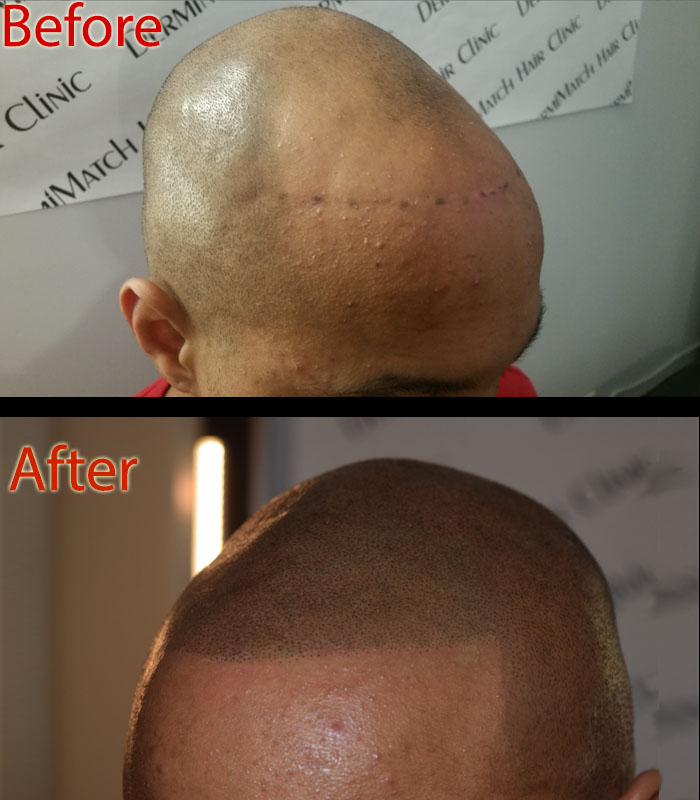Also known as androgenetic alopecia, pattern hair loss is common in men and women. Hair loss occurs in a pattern formation but the type of pattern is different in men and women. Let’s explore this further.
Male Pattern Hair Loss
Genetics is responsible for a majority of male pattern hair loss cases, which affects about 50% of men over 50 years of age. The condition is associated with androgen or male sex hormones.
The Norwood Scale measures pattern hair loss in males – the higher the number on the scale, the more severe the male hair loss.
Type 1
Some men maintain this type of hair loss all through their lives. In addition, they experience a minimal hairline recession, without apparent hair loss at the crown.
Type 2
Type 2 – Slight recession of the hairline is experienced at the temples. There is no hair loss at the crown. When a man enters this stage, their hairline may appear in the shape of M, V, or U. Hair loss is not common for all men when they reach this stage.
Type 3
There is noticeable hair loss at the temples and front of the scalp. Men experience M-, V- or U-shaped hairlines. Besides, there may be loss of hair at the crown or vertex.
Type 4
A man experiences hair loss at the front, temples, and crown. Besides, there is a small band of hair separating two areas affected by alopecia.
Type 5
A man suffers from significant hair loss around the front, temples, and crown, with obvious thinning of the hairband that separates the forehead from the crown. At this stage, the horseshoe hair loss pattern becomes pronounced.
Type 6
The temples, crown, and front experience drastic hair loss at this stage. As a result, the areas of hair loss merge along with thinning. The result is total hair loss on the small band that separates the forehead from the crown.
Type 7
This is the severest form of male pattern hair loss. While men experience severe hair loss at the crown, temples, and front, there are only apparent signs of the horseshoe pattern.
What is Female Pattern Hair Loss?
A majority of women are likely to suffer from significant hair loss before 65 years of age. Female pattern hair loss is primarily the result of hormonal changes. It could be hereditary. In women, the extent of pattern hair loss is measured on the Ludwig Scale.
Type 1 – A woman starts to experience thinning at the top or the crown. However, hair loss is not apparent at this stage.
Type 2 – Hair loss becomes apparent at the crown and top of the scalp as more scalp starts to show. Besides, some women experience a loss in volume.
Type 3 – The most severe form of female pattern hair loss. At this stage, hair loss becomes even more apparent, with an increased loss of hair on the top and crown. The scalp becomes even more obvious and there is no contrast between the scalp and hair. There is more hair thinning than total hair loss for many women.
SMP for Pattern Hair Loss
Whether you are a male or female, pattern hair loss is not a welcome sight. But when that does happen, you want to look for a hair restoration alternative that helps you look good and confident without the fear of hair loss.
At DermiMatch, you will find the best Phoenix SMP artists who can help you regain your confidence with their expertise in scalp micropigmentation.

